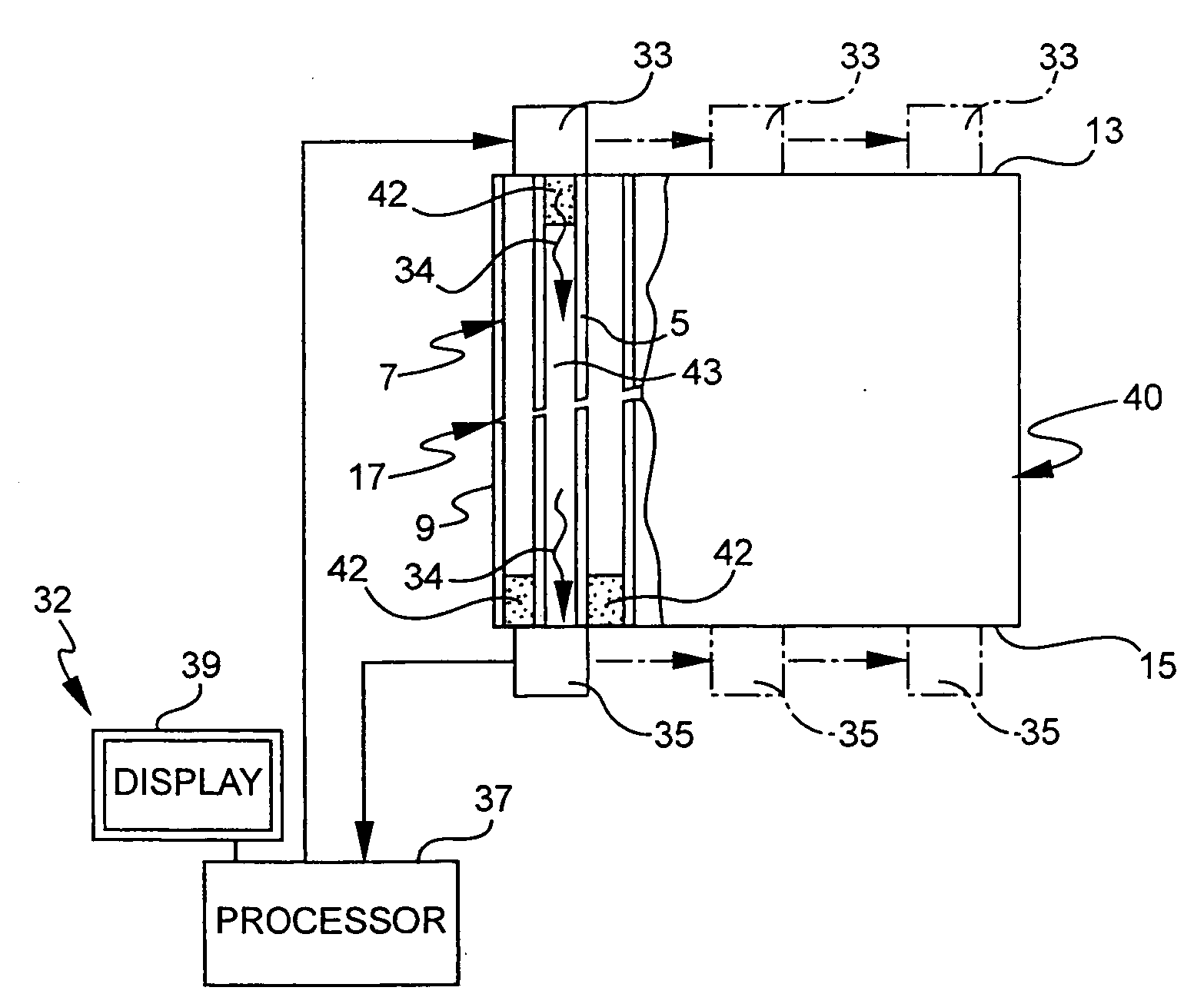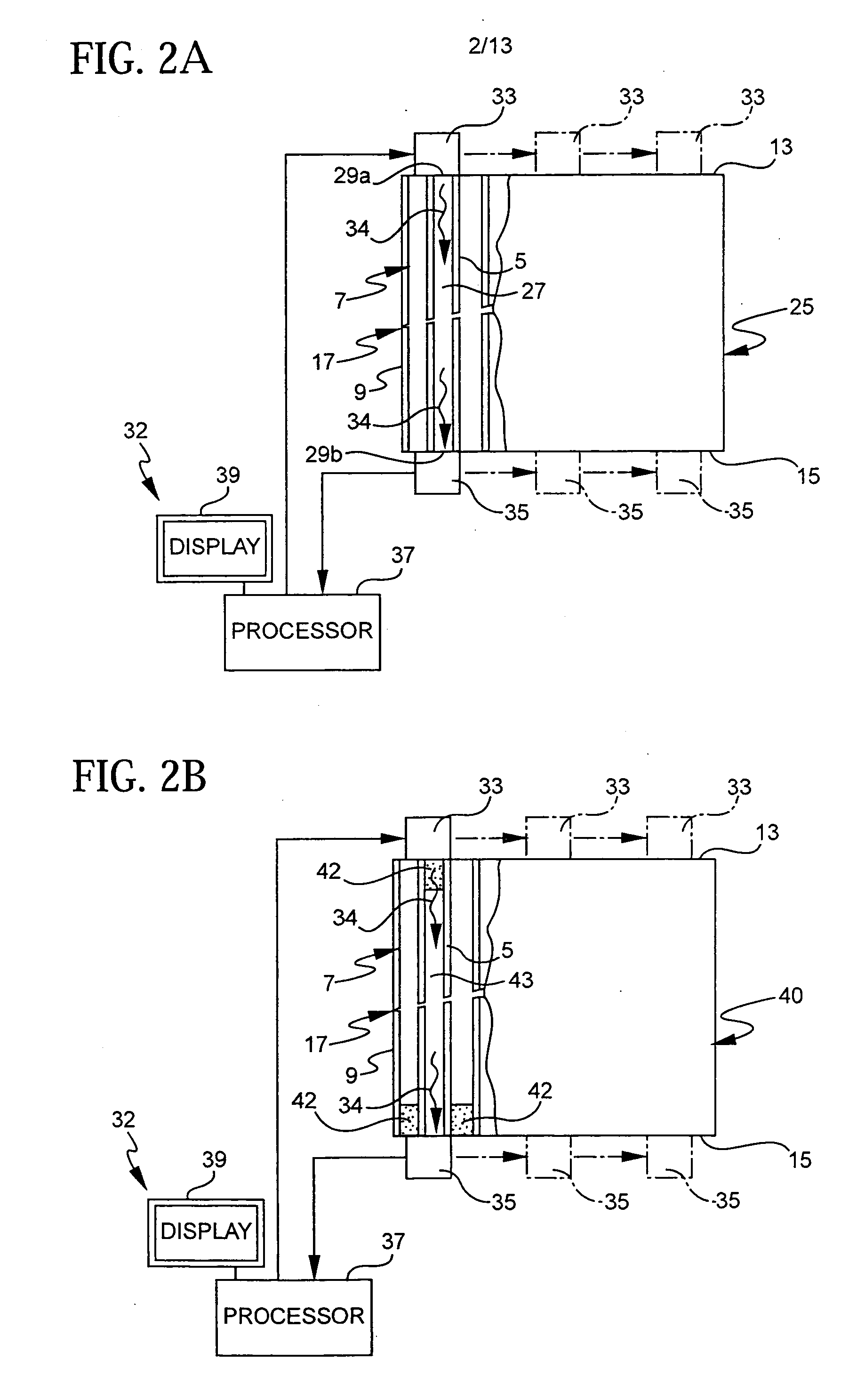Non-contact ultrasonic testing method and device for ceramic honeycomb structures
- Summary
- Abstract
- Description
- Claims
- Application Information
AI Technical Summary
Benefits of technology
Problems solved by technology
Method used
Image
Examples
Embodiment Construction
[0035] With reference now to FIGS. 1A, 1B and 1C, both the method and the device of the invention are particularly useful in detecting discontinuities and other inhomogenieties which may be present in a ceramic honeycomb structure 1 of the type used in diesel and automotive exhaust systems. Such structures include a network 3 of web walls 5 that define gas-conducting cells 7 along the axis of rotation of the structure 1. The network 3 of web walls 5 is surrounded by an outer skin 9. The outer skin 9 has an inner edge 11 that is generally integrally connected (except, for example, at defects) to the outer edges of the network 3 of walls 5, as is best seen in FIG. 1B. The resulting can-shaped structure has an inlet end 13 for receiving exhaust gases from a diesel engine or automobile engine, and an outlet end 15 for expelling these gases.
[0036] Ceramic honeycomb structures 1 used as flow-through catalyst substrates have cells 7 which are completely open between the inlet and outlet e...
PUM
 Login to View More
Login to View More Abstract
Description
Claims
Application Information
 Login to View More
Login to View More - R&D
- Intellectual Property
- Life Sciences
- Materials
- Tech Scout
- Unparalleled Data Quality
- Higher Quality Content
- 60% Fewer Hallucinations
Browse by: Latest US Patents, China's latest patents, Technical Efficacy Thesaurus, Application Domain, Technology Topic, Popular Technical Reports.
© 2025 PatSnap. All rights reserved.Legal|Privacy policy|Modern Slavery Act Transparency Statement|Sitemap|About US| Contact US: help@patsnap.com



